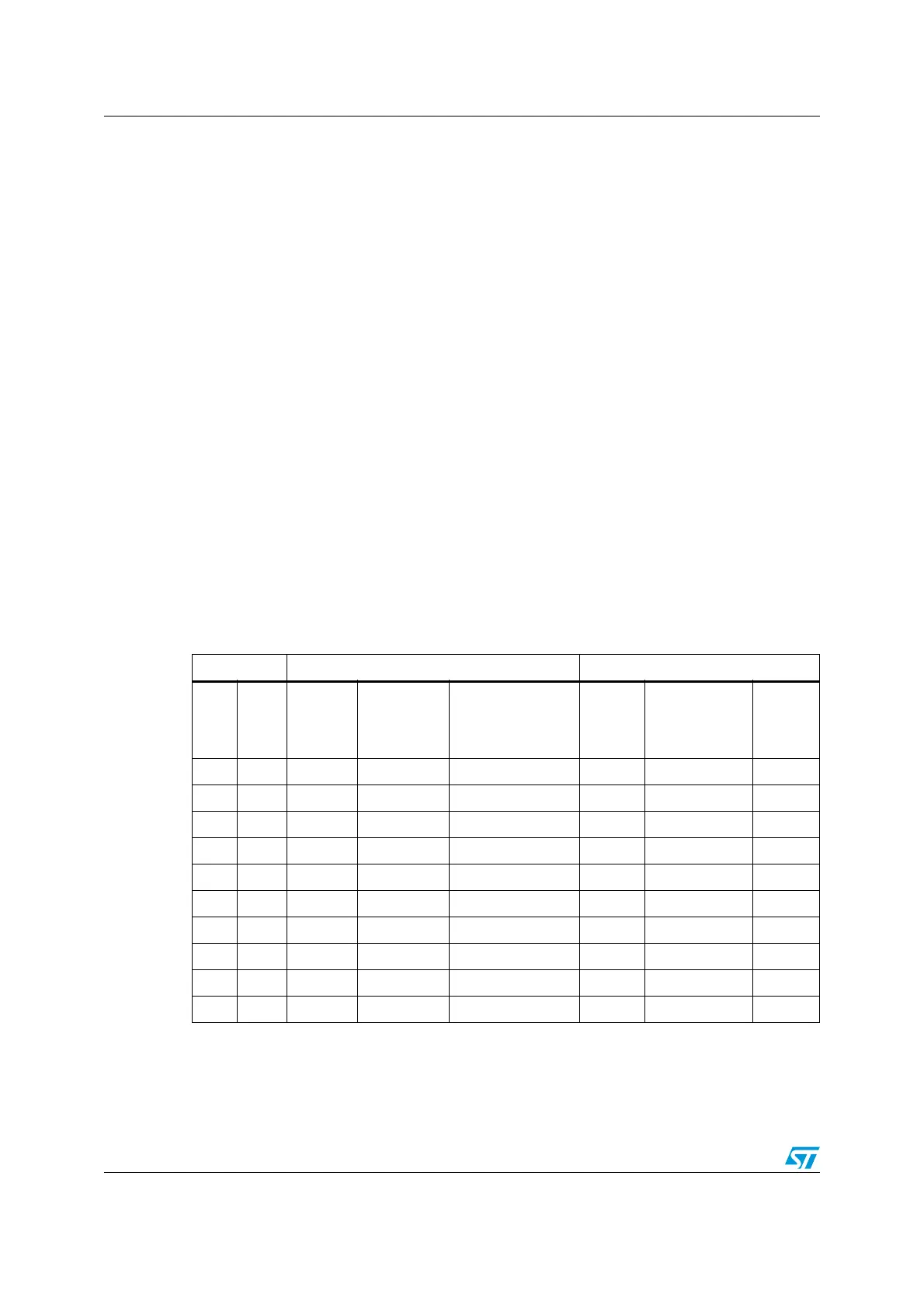Universal synchronous asynchronous receiver transmitter (USART) RM0008
622/690
Fraction (USARTDIV) = 12/16 = 0.75d
Therefore USARTDIV = 27.75d
Example 2:
To program USARTDIV = 25.62d,
This leads to:
DIV_Fraction = 16*0.62d = 9.92d, nearest real number 10d = 0xA
DIV_Mantissa = mantissa (25.620d) = 25d = 0x19
Then, USART_BRR = 0x19A
Example 3:
To program USARTDIV = 50.99d
This leads to:
DIV_Fraction = 16*0.99d = 15.84d => nearest real number, 16d = 0x10
DIV_Mantissa = mantissa (50.990d) = 50d = 0x32
Note: The Baud Counters will be updated with the new value of the Baud Registers after a write to
USART_BRR. Hence the Baud Rate Register value should not be changed during a
transaction.
Note: 1 The lower the CPU clock the lower will be the accuracy for a particular Baud rate. The upper
limit of the achievable baud rate can be fixed with this data.
2 Only USART1 is clocked with PCLK2 (72 MHz Max). Other USARTs are clocked with
PCLK1 (36 MHz Max).
Table 153. Error calculation for programmed baud rates
Baud rate f
PCLK
= 36 MHz f
PCLK
= 72 MHz
S.No
in
Kbps
Actual
Value
programmed
in the Baud
Rate register
% Error
=(Calculated -
Desired)B.Rate
/Desired B.Rate
Actual
Value
programmed in
the Baud Rate
register
% Error
1. 2.4 2.400 937.5 0% 2.4 1875 0%
2. 9.6 9.600 234.375 0% 9.6 468.75 0%
3. 19.2 19.2 117.1875 0% 19.2 234.375 0%
4. 57.6 57.6 39.0625 0% 57.6 78.125 0.%
5. 115.2 115.384 19.5 0.15% 115.2 39.0625 0%
6. 230.4 230.769 9.75 0.16% 230.769 19.5 0.16%
7. 460.8 461.538 4.875 0.16% 461.538 9.75 0.16%
8. 921.6 923.076 2.4375 0.16% 923.076 4.875 0.16%
9. 2250 2250 1 0% 2250 2 0%
10. 4500 NA NA NA 4500 1 0%

